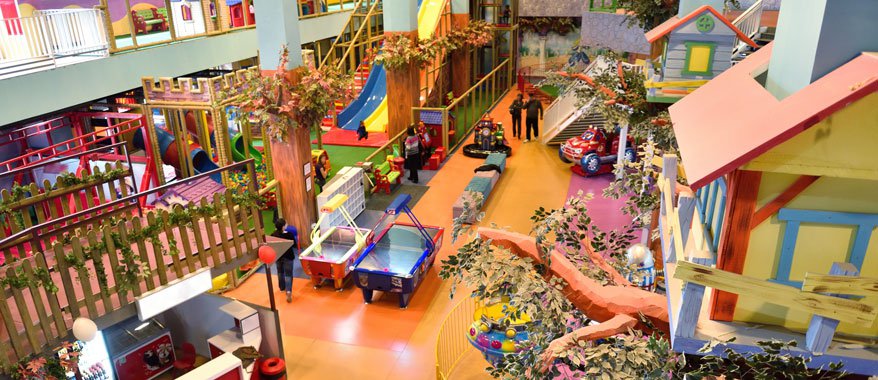
Today’s consumers are very busy, to the point that even when shopping speed and convenience are two of their main goals.
What’s your hurry?
Shopping can be fun, sure. But when you factor in driving to the store, having to find a parking space, fighting for a shopping cart and having to look everywhere for the right item — let’s admit it: it can be inconvenient and time-consuming. It’s therefore unsurprising that many people see shopping as a chore they’d rather get over with quickly, so that they can go home and spend quality time with their families. And that’s one of the fundamental reasons why online shopping is growing unstoppably.
Finding your strategy
All retailers with physical stores have to compete with the practicality of online shopping. To lure the customer out of bed and to your store, you must offer something that that person will not be able to get online.
Virtual reality (VR) and augmented reality (AR) have increased the realm of what is possible online: apps like Zeekit, offering virtual fitting rooms for online shops, allow customers to see what a specific product would look like on them, with personalized size suggestions added to the mix. As new technologies become more and more sophisticated and available, physical stores must do much more than simply give customers a chance to touch and feel the products before purchase.
Beyond price and convenience
The typical online shopping experience focuses on rapidity and practicality. In a bid to differentiate themselves from online competitors, physical stores are offering the exact opposite: a stress-free, interesting, inspiring time – an experience to live. To attract, retail adds entertainment and engagement to the mix, becoming retailtainment.
Living the brand
Innovative retailers are creating new ways to draw customers into their brand universe by engaging them with all their senses. Fashion designer Ralph Lauren took his childhood memories of freshly brewed coffee to his New York flagship store, where he built a coffee shop and library. The aim was to create a setting that complemented the clothing, as well as to “create a place where people could come together and take a break from their busy days,” as Ralph Lauren himself put it. Today in the store customers can taste, smell, see and read their way into the Ralph Lauren brand – an experience that can be enjoyed even by people who decide to buy just a macchiato, and none of the brand’s wares. Find out more on how best to add an extra activity in your retail business and download our whitepaper on how to open and run a multi-business store.
That’s entertainment!
How do you make shopping a fun experience, one that will entice people to go out? Some retailers redesign their stores, creating livable spaces that will attract customers. Department store Macy’s started a collaboration with event startup Daybreaker which resulted in alcohol-free morning dance parties being held in Macy’s New York flagship store. Although it’s arguable whether the parties brought more sales to the store, one thing they did is re-frame traditional old Macy’s as a space for younger consumers, and create a bond between the brand and the partygoers. When someone gives us something, we feel compelled to give back – it’s scientifically proven. Therefore, it is safe to assume that the next time these partygoers need to shop somewhere, they may think of Macy’s before other more traditional department stores.
A learning space
Although the internet can be a great place to retrieve information, when it comes to specific issues nothing beats a face-to-face talk with an expert. On this basis, Korean department store Shinsegae has set up a consulting desk inside its new cosmetics shop. Professionals will be available to advise customers on various types of beauty issues, from suggestions on which colors to use for one’s complexion to medical advice on how to deal with conditions such as acne or hair loss.
British supermarket chain Waitrose offers cookery schools in a number of its locations. Participants can learn from chefs how to use the supermarket’s ingredients to create recipes that range from classic cuisine to fusion dishes. The brand even runs classes for children, effectively offering a retailtainment day out for the whole family.
New competitors and new collaborators
When entertainment enters the store, retailers find themselves fighting in a totally new arena: the leisure industry. This is an already crowded space with many diverse players –think museums, cinemas, restaurants, entertainment venues…- where retailers are finding not only new competitors, but also like-minded business with which they can cooperate. Good partnerships can add traffic to both businesses, while creating new, exciting experiences for the customer. Unexpected collaborations are becoming quite common among innovative players. Japanese casual wear brand Uniqlo teamed up with Starbucks to offer a relax area with coffee and snacks in-store. Urban Outfitters took it a step further and designed its Brooklyn store as a gathering place with a restaurant, a rooftop bar, and even an event space. The place hosts meetups, parties and craft nights – and, almost as an afterthought, it also sells the brand’s apparel.
In the future, the footfall in your store will increasingly be determined by the quality and originality of your in-store experience. To attract customers, you will need to create moments and spaces that surprise and engage: unless what you offer is novel and relevant to them, people won’t get out of their pajamas to visit you. The key to delivering the kind of experience your customers crave starts with collecting the right kind of data to understand their needs and being open for fresh initiatives, perhaps in collaboration with like-minded brands.
Do you want to know more about what innovative retailers are doing to constantly delight their customers? Read our latest retail trends whitepaper and find out the most innovative brands and trends in present and future retail.

 Article written by
Article written by